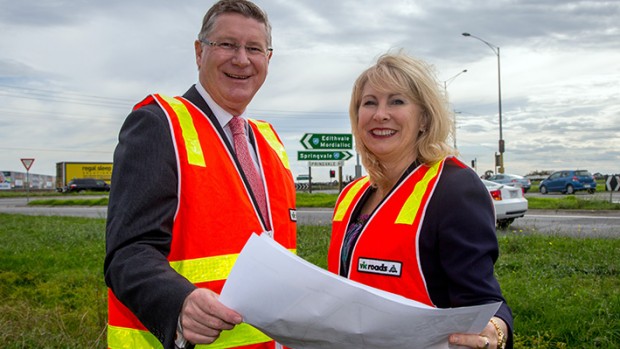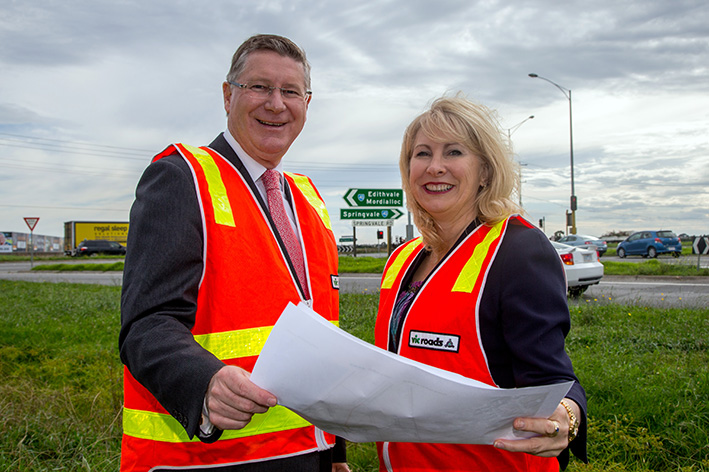
THE state government’s budget commitment to improving Melbourne’s major roads network came into local focus last week when Premier Denis Napthine visited the site of the proposed Mordialloc Bypass.
He announced a $10.6 million grant to prepare a detailed business case and to seek statutory approvals for the bypass linking the northern end of the Mornington Peninsula Freeway with the new Dingley Bypass.
He was accompanied by Mordialloc MP Lorraine Wreford who said the Bypass would provide additional north–south road capacity, reduce delays on existing roads and cater to efficient movement of commuter and freight vehicles.
“Further planning and development of the Mordialloc Bypass is great news for anyone that travels through this area and has experienced traffic congestion,” Dr Napthine said.
”We have already committed to building the Dingley Bypass. Construction will begin later this year and will be completed in 2016. The Dingley Bypass will improve travel times and freight connections in this vital employment area.”
The premier said development of a business case and work to obtain statutory approvals was the next step in the project and would build on VicRoads’ analysis of the feasibility of the project.
“In the morning peak hour, we see more than 3500 vehicles turn from the Frankston Freeway onto Springvale Road. In the afternoon peak, the number of vehicles turning onto the freeway can also result in extensive queues and delays,” Ms Wreford said.
“This bypass would reduce traffic congestion and delays on Springvale Road, and improve traffic flow along this important bus route.’’
Improvements to overall transport network efficiency will reduce traffic on Wells Road, White Street, Nepean Highway and beyond – “a major issue in the local community.”
Carrum MP Donna Bauer said that, combined with the Dingley Bypass, the bypass would reduce congestion and improve safety on other local roads.
“These projects align with key government strategies, such as Plan Melbourne and Securing Victoria’s Economy, and will ultimately boost productivity and improve safety and amenity on the road network,” Dr Napthine said.

